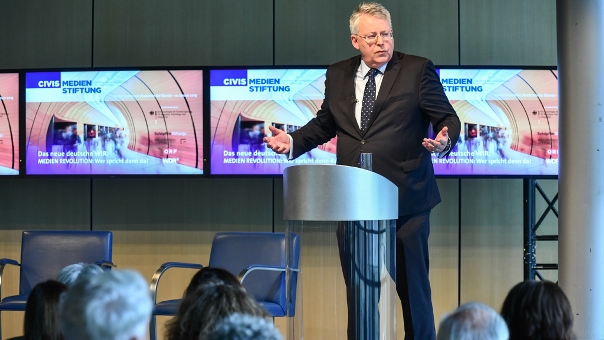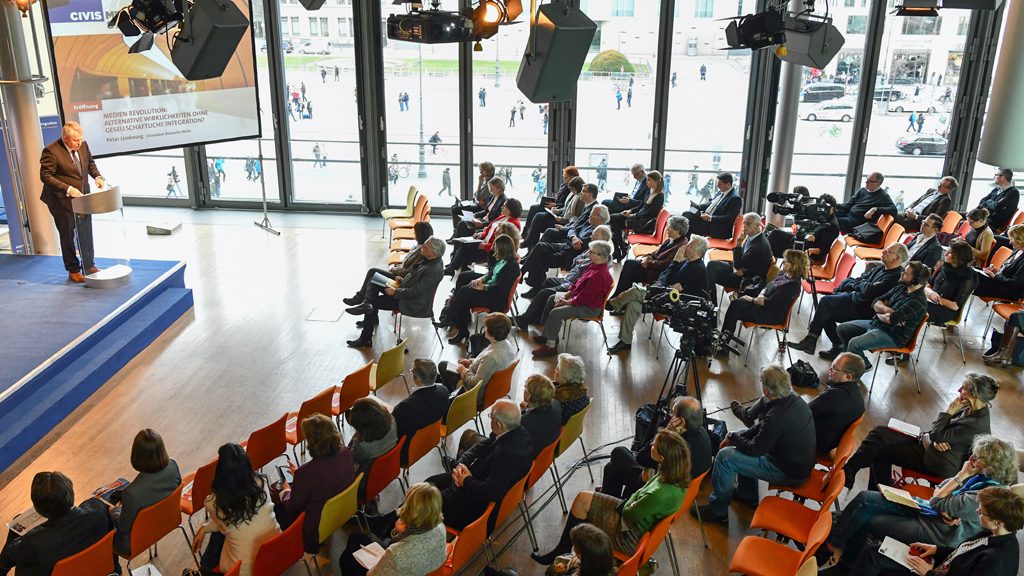DW Insider must say goodbye
The DW Insider blog will be shutting down at the end of April.
You can now find everything you need to know about DW’s content, partners, and the best of what we do on the business and sales website.
Thank you for your reading and we hope you will continue to be curious about the latest from DW.
Journalism in 2019 must earn back the public trust
 In December 2018, Der Spiegel, one of Germany’s top news magazines, was rocked by a scandal that shook the media world. It was revealed that one of its star reporters, 33-year-old Claas Relotius, had falsified stories “on a grand scale.” In dozens of investigative articles, Relotius simply made up key details, conversations and scenes that were published as factual, well-researched journalism.
In December 2018, Der Spiegel, one of Germany’s top news magazines, was rocked by a scandal that shook the media world. It was revealed that one of its star reporters, 33-year-old Claas Relotius, had falsified stories “on a grand scale.” In dozens of investigative articles, Relotius simply made up key details, conversations and scenes that were published as factual, well-researched journalism.
Der Spiegel called it the lowest point in its 70-year history. The revelation has also forced some soul-searching at the magazine and across the media, especially in Germany.
If Relotius won prizes for his work, what does that say about the standards set by the media? What are we looking for in storytelling and “quality journalism?” Spiegel admitted that he delivered exactly what everyone wanted, and his falsified reports were awarded for their vivid depiction of place and character that created an emotional connection with readers. But those details were all imagined, and Relotius’ reporting was indeed too good to be true.
Sandra Petersmann, a DW foreign correspondent, who has a long career in investigative reporting, wrote after the case broke that foreign investigative reporting is the “pinnacle of journalism” and that Relotius’ actions amounted to “journalistic treason.”
The truth might not always fit the narrative journalists have in mind, but the pressure of the digital media age and the competition for the audience’s attention in a crowded world of information, can create an incentive for reporters to bend the facts to suit the story.
In a media landscape that is becoming more fractured and contentious, the Spiegel incident provides ammunition to opponents of the liberal media; armed with slogans of “fake news” and “liberal bias.” And critics of the media may have a point, namely that the media live in a self-serving and self-congratulatory bubble.
DW’s Director General Peter Limbourg recently told the CIVIS media conference in Berlin that it was “absurd” that there are more than 500 journalist prizes given out in Germany – when resources put into awards galas could be better invested in reporting and research.
“Our profession is now at the forefront of self-adulation,” said Limbourg, adding that although journalists are unpopular, they are constantly “celebrating themselves.”
But despite these self-inflicted wounds, the media has more potential than ever before to inform more people and help shape public debate over critical issues. More people are paying attention to politics, policy and need explanation and guidance to big issues that affect their lives. And in a country like Germany, journalists enjoy press freedom and well-financed public broadcasting.
And as Peter Limbourg said, any media reform needs to ensure that the media and the principles it is based upon remain sound. “The enemies of our society are just waiting to see if we are dumb enough to destroy ourselves,” he said.
The Relotius scandal is a reminder that reporting the truth is at the marrow of good journalism, whether it is journalists exposing those in power, or even one of their own. And even if the public trust in journalism is constantly in question, the path forward remains the same – “Respect for the truth, respect for human dignity and the delivery of truthful information to the public are the supreme duties of the press.”
Witness India’s environmental revolution on Eco@India
 India is at an environmental crossroads. As the country grows its economy and brings more of its population out of poverty, it is producing an extreme level of air, water and ground pollution. At the same time, India is experiencing a revolution in renewable energy development like solar power.
India is at an environmental crossroads. As the country grows its economy and brings more of its population out of poverty, it is producing an extreme level of air, water and ground pollution. At the same time, India is experiencing a revolution in renewable energy development like solar power.
DW’s new environmental magazine for India, Eco@India, brings you the stories, people, challenges and innovations that are changing India’s approach to environmental issues. The format takes a personal approach and focuses on individuals and local projects. With this local focus, Eco@India puts a spotlight on India’s movement towards sustainable and ecological development – one person, city and region at a time.
Some highlights include entrepreneurial solutions to metropolitan waste management, cleaning India’s dirtiest river and fighting noise pollution in Mumbai.
Each episode of Eco@India also includes segments on European cities and sustainable practices that demonstrate how environmental preservation is truly a global issues and solutions require international cooperation.
Eco@India comes along with the success of the show’s African format, Eco@Africa, which is currently on its second season. Be sure to catch the latest episodes of Eco@India this January and February, with new episodes broadcast every Friday.
Market roundup: December 2018

Americas
The Colombian TV news channel Cablenoticias is now including Euromaxx, En forma, Visión futuro and Todo gol in its lineup. The TV channel is available in 13 countries in Latin America and more than 10 million households.
LINK TV in the United States in now broadcasting DW’s The Day during prime time. LINK TV reaches more than 24 million households in the United States and focuses on international content.
Asia
Indonesia’s largest IPTV and OTT provider UseeTV will now be broadcasting DW’s TV magazine Inovator, on linear TV and as video on demand. UseeTV is available in 1.2 million households. In addition, regional broadcasters SaktiTV and JawaposTV are now also broadcasting Inovator.
The Indonesian news portals Elshinta.com, Kontan.co.id und TribunNews.com are now including DW’s online content on their websites.
The cable providers CablePlus Karachi, DonCable Multan and FiveStar Gujranwala are now including the English TV channel in their basis package. Together, the new DW partners reach more than 80,000 households in Pakistan.
Market roundup: November 2018
DW’s daily news magazine, The Day, is now available in the United States on the Public Broadcasting Service (PBS). From Monday to Friday, DW’s The Day is broadcast in a regular PBS time slot with world news coverage with in-depth reporting and insight. The program is available via satellite and is broadcast on more than 100 PBS stations nationwide to more than 70 million households in the USA.
DW has been available since October in Malaysia and is gaining popularity with the 8.5 million subscribers of Malaysia’s leading OTT provider tonton.
In Pakistan, cable partners KhyberCable, FrontierCable, WorldCall Lahore, NewTech Gujranwala, LuckyComm Karachi and Jhelum Vision have all agreed to include DW’s English TV programming in their basic packages. Together the new partners reach more than 200,000 households.
Thailand’s mobile video service LOOX is carrying DW programming in English 24/7 on the LOOX-app. The OTT service reaches over 250,000 subscribers nationwide and is operated by the telecom company Thaicom.
Vietnam’s largest English-language news website, VNExpress is including DW articles and videos covering culture, science, sports, business and world news. VNExpress records over 162 million monthly visits and is Vietnam’s most-visited website.











Feedback